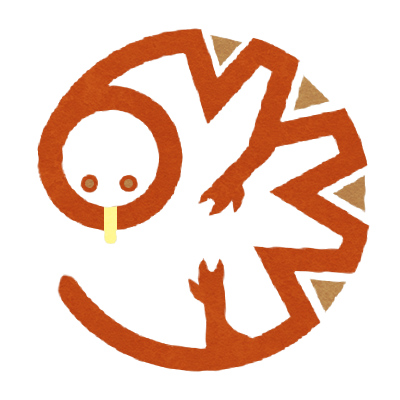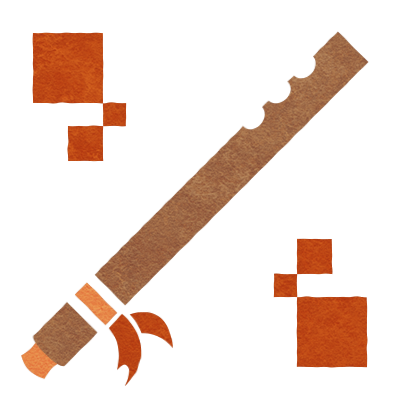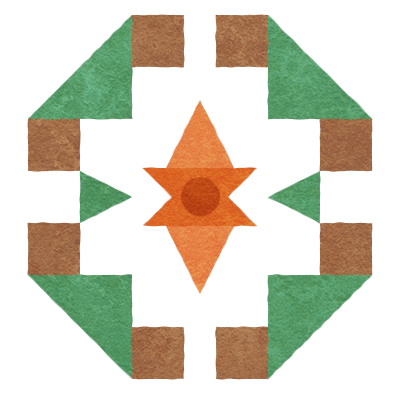Ytzklaponeu
Yiht-z-klah-pah-noo
May our hunger show our devotion, oh Ytzkla, for we cannot begin to understand that unending desire which burns within your belly.The Ytzklaponeu are a pious people who live in a great city built upon the great lizard Ytzkla? who is the center of their devout worship. They seek to aid the great lizard's quest to regain their supposed former glory, by fighting to prevent their victims from escaping the great beast's waiting maw.
Extra Info
For racial information, read,
A Pale Myth
Naming
Ytzklaponeu names are more often than not unisex. As they speak a dialect of Qetlec, their naming conventions differ. Instead, the Ytzklaponeu carry down family names— which consist of "Ytz" followed by one extra character. Ex. Ytzkon, Ytztol, Ytzxi, Ytzko First names unique to the Ytzklaponeu include: Xoco, Nual, Ponli, Tcho, Nchol, Reul, Ytolkla, Queple, Liok, RotchTraditions & Values
Greetings & Farewells
When greeting a stranger, a Ytzklaponeu will lightly move their closed fist up to a few inches away from the stranger's heart. Doing so acknowledges their worth as a human being, and this greeting is very rarely given to slaves or enemies. Slaves may find themselves acknowledged should they show interest in and convert to the Ytzklapon faith, and while unlikely to free them of their bondage, it will earn them better treatment.Taboos
Worship of false gods, cannibalism, and murder of fellow Ytzklaponeu are punishable by death. Breaking the first tenet of their faith— "never shall the sun fall upon the scripture"— is, too, punishable by death, as is apostasy, and heresy. Should one complain of hunger, they are force-fed a bowl of stones. Obesity, too, is seen as insult to the starving Ytzkla.Milestones
Birth
Birth is almost tragic, as the Ytzklaponeu see it as splitting Ytzkla's original body further, leaving more for the pale lizard to consume. The parents of the child will fast for up to three days after the birth, taking penance for their actions— even if they are necessary for Ytzkla's army to grow.Coming of age
Ytzklaponeu undergo the Klapnot at milestones throughout their life, a ritual where they embed pieces of Ytzkla's spines under their skin to spell out scripture on the surface. The face is the first to be marked, and the youth will don their Cluetolxli?— a garment that covers the entire head and face. The embedded scripture must never be touched by sunlight, and breaking this law is punishable by death.Death
When a Ytzklaponeu dies, their body is carried by their family to a special room in the nearest tolix that houses bodies from the surrounding area. When enough of the dead are collected, they are taken to the great Ytzklatolix, prayed to, adorned with incense, and finally returned to whence they came— by being fed to Ytzkla.Eating
The Ytzklaponeu eat as little as possible to retain their strength; eating less while travelling between settlements, and more when preparing to attack. As Ytzkla starves, they too shall starve.Unknown Origins
Where the Ytzklaponeu originally came from is unknown. Some speculate that they had come from a desert, at least, perhaps even in Rqet— given the similarities in appearance to the peoples found in the western desert there. Stranger still is their language— being a dialect of Qetlec, a language which should not have existed when they left the continent. That is, of course, if they are from Rqet to begin with.Did they learn from slaves, or had the pale lizard itself taught them our language?
War
Before battle, incense made of ground spines from Ytzkla's back fill the air of each home. Red strips of cloth are woven, braided, or otherwise embellished by the loved ones of soldiers and given to them. These are tied around the soldier's neck and often have a small stone or weight at the bottom so that it hangs over their heart. The cloth represents blood coming from the heart, which connects the soldier to those close to them.Ideals, Love & Gender
Relationships
Marriages are arranged by a child's parents, who are oft wed betwen the ages of seventeen and twenty-two. It is not uncommon for parents to attempt to connect themselves to those of higher status in Ytzklaponeu society— such as yiltz. However, the marriage may be challenged by either child. To do so, the child must formally announced their challenge, and fast for three days while praying for guidance.Following this, if they still challenge their marriage, they must swallow a small rounded bead made of Ytzkla's spines and head to the nearest tolix. Here, a yiltz presiding over matters of love will meditate while surrounded by thick colored clouds of dyed incense. This is burned from a holder placed atop their Cluetolxli. After around an hour or so of deep meditation, the yiltz will awaken, and decide whether or not the marriage will continue.
Beauty
With their heads and faces covered, the Ytzklaponeu focus more on body shape than faces or hair for beauty. Those fit and able-bodied, are desired above all. Hands, too, are sought after; the rougher and beaten the hand, the better.Gender
As they are oft covered, the Ytzklaponeu cannot always easily distinguish the sex of another— and as such, both men and women enjoy the same roles and status in their lives. Both can become yiltz, own property, and have equal say in marriage.Art, Architecture, and Dress
Art
Textiles and dyes are the dominant form of artistic expression for the Ytzklaponeu. Knots and braids are almost always present, and families of higher status will often have a particular knot or braid as their mark. Among those living atop the greater spines of Ytzkla, great ropes are tied to either the ground or another spine, and these textiles are tied to them and hung from above. Often, strips of cloth are cut or shaped to resemble Ytzkla's tongue, or in the profile of their body. Embossing and embroidery along with rarer, finer, textiles are reserved for tolix and higher ranking officials and military awards.The Tihuetil
About ten years ago, a small group of Ytzklponeu escaped the city— jumping from the pale lizard's back in the night, freeing slaves with them. This group is known as the Tihuetil?— or "thread-cut."They wish to stop the pale lizard's quest to consume all of humanity— though their number is small. For now, they hide and plot.
Architecture
The architecture of the Ytzklaponeu is centered around the structure of their old city, repaired over the years with a mix of materials from their conquests. Around the old structures, and replacing those that could not be replaced, is a unique jumble of materials and buildings looted throughout their conquests.
The old structures of the city seem to originally have been made of pale-orange adobe brick with similarly colored plaster. Many of these have lost their plaster or replaced it with some new mixture. Several structures are covered with many patterned cloths and braids, giving the city a colorful, varied look. Painting structures is very uncommon within the city, as cloth is greatly preferred and valued. There is a deeper pride and skill for the Ytzklaponeu in weaving, dyeing, and braiding.
Newer structures change the farther from the city center one travels, reflecting the conquests and pillages of the nomadic people. Closest to them are orange adobe structures, then simple grey-stone brick, wood, pelt tents, and a finally a mixture of wood and stone. Lighter materials tend to make up the structures that sit higher up the great lizard's spines, things such as pelts, cloth, wood, palm fronds, and other odd materials.
Dress
It is assumed that the Ytzklaponeu originated from a warm climate, as they typically wear simple beige robes tied at the waist by a copper belt. This is accompanied by a colorful shawl in cold weather. Of course, for adults, the Cluetolxli is worn as well. Often, dyed and braided cloth strips will be hung from the Cluetolxli or sewn into their robes, adding color and flair while showing their skill and worth to others.Religion & Myth
Yiltz run the nation, under the watch of the Ytzklatich— the leader of their nation and head of their faith, supposedly appointed by Ytzkla themselves. As such, their religious laws are the same laws as those of the nation. There have been, in the past, those who have left the faith— going so far as to leap from the great lizard's back into the unknown.
Related articles
ytzklapon
Remove these ads. Join the Worldbuilders Guild







This is such an interesting culture. The fasting in particular is really interesting, especially the poor mother having to fast after birth. I doubt that is a pleasant experience. Also being force fed a bowl of stones if you complain you're hungry - yikes!
Explore Etrea | March of 31 Tales
Thank you! They were the first I wrote for Qet so I'm glad to polish the article up, and get more eyes on them in the process!